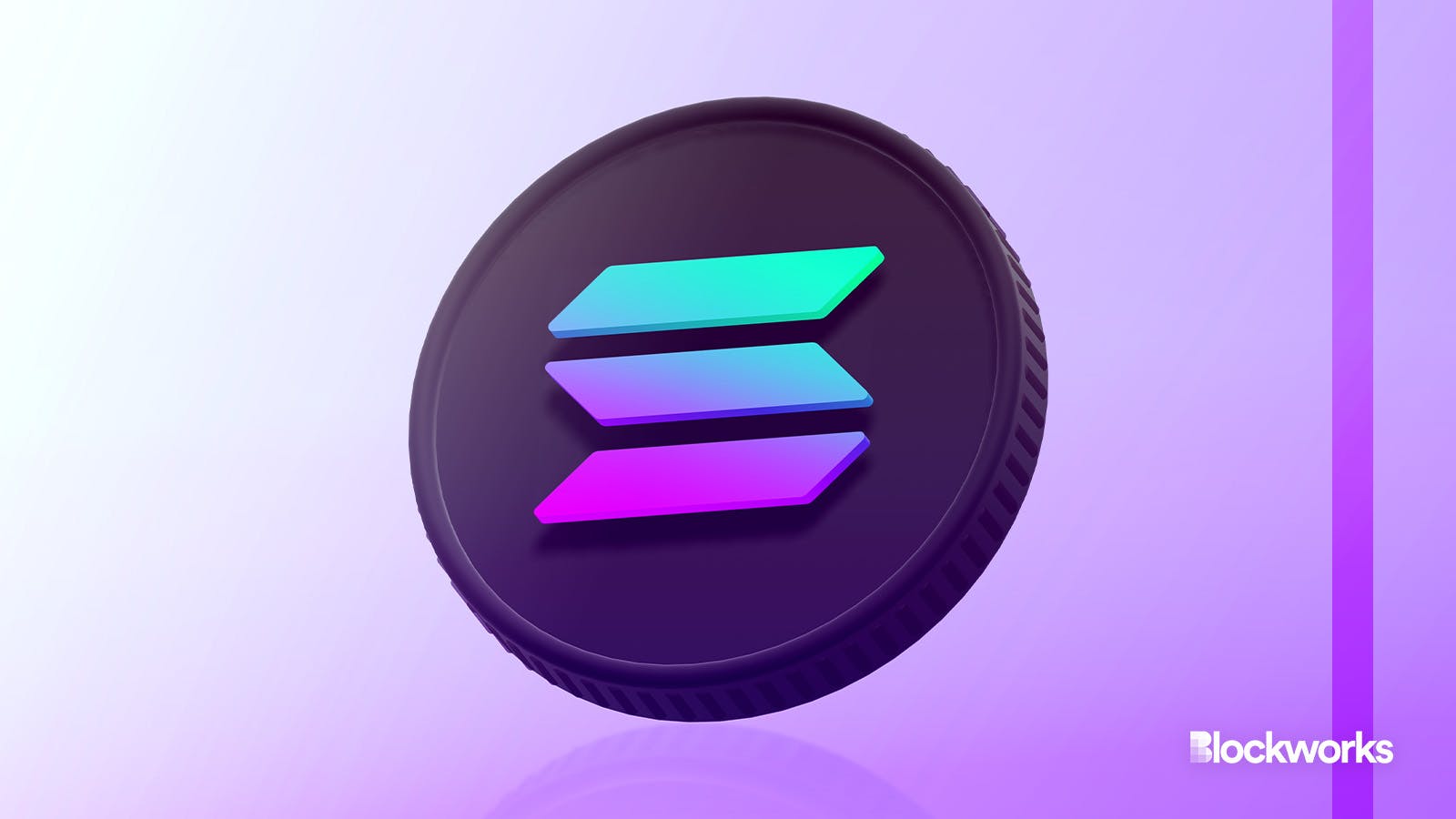Solana breaks $200 as memecoin and airdrop interest continue
Solana’s surreal price run continues

nicemeanin/Shutterstock modified by Blockworks
Solana crossed the $200 mark for a few hours Sunday night, recapturing the threshold for just the second time since 2021.
The rally would be short-lived, as Solana (SOL) tumbled Monday to around $190. And it will still need to climb to around $260 to set a new all-time high, according to CoinGecko.
After languishing for months amid the fallout of FTX’s collapse, Solana interest picked up near the end of 2023 as airdrops and memecoin speculation drove user interest. Solana’s ecosystem will see another airdrop soon as the cross-chain messaging protocol Wormhole gears up to release its W token, with some of the supply unlocking on Solana.
Read more: Wormhole’s W airdrop to ‘acknowledge and reward’ dedicated users
Partly due to airdrop allocation farming, the total value locked of Solana’s DeFi protocols has continued its steady upward trajectory that began in mid-November, sitting at around $4.6 billion, according to DeFiLlama.
The chain has also seen a notable recent increase in stablecoin volume. Solana processed more than $100 billion in USDT and USDC transfers on multiple days last week, according to Blockworks Research.
But memecoins have become the latest center of gravity in the Solana world. Platforms like DEX Screener have made the low-fee layer-1 a popular venue to speculate on fly-by-night tokens hoping to become the next dogwifhat (WIF).
Influential crypto figures including Ethereum co-founder Vitalik Buterin chimed in on memecoins last week, with some casting them as a symptom of crypto’s broken moral compass and others saying they’ll be the go-to-market strategy of the future.
Read more: Crypto leaders insist memecoins have a purpose
Solana has also seen some interest from institutional platforms. Grayscale’s Solana Trust, named GSOL, has seen its market price climb for the past three weeks. GSOL’s net asset value per share, or the value per share of GSOL, is near its highest point since the product started trading in April 2023. It’s not Grayscale’s only foray into SOL. Its staking fund, which launched last month, included Solana among a group of assets being staked.
Read more: Grayscale announces fund aimed at optimizing staking rewards
21Shares and VanEck are a couple of other firms offering exchange-traded products that provide exposure to the Solana ecosystem.
Get the news in your inbox. Explore Blockworks newsletters:
- The Breakdown: Decoding crypto and the markets. Daily.
- 0xResearch: Alpha in your inbox. Think like an analyst.






